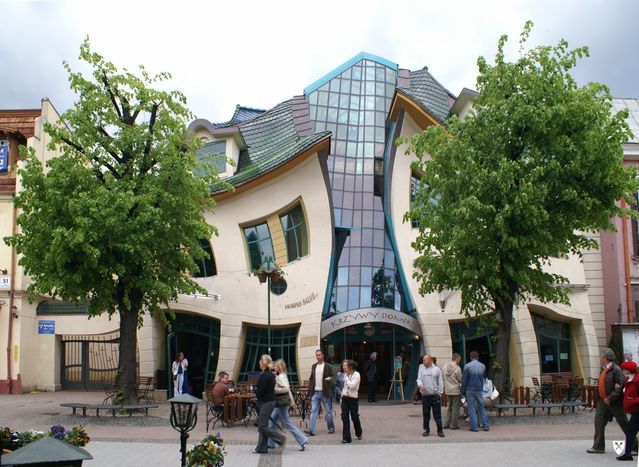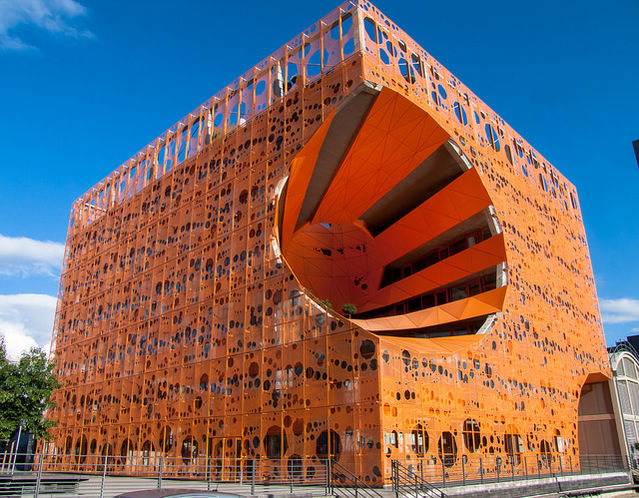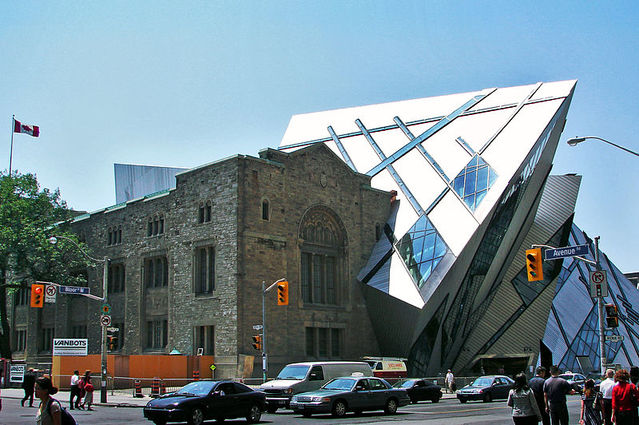Creativity
How Your Brain Takes Good Ideas and Makes Them Better
Bending, breaking, and blending are enduring tools for innovation.
Posted October 10, 2017 Reviewed by Ekua Hagan
By Anthony Brandt and David Eagleman
Humans are continually creative: Whether the raw material is words or sounds or sights, we are food-processors into which the world is fed, and out of which something new emerges.
Our innate cognitive software, multiplied by the massive population of homo sapiens, has produced a society with increasingly faster innovation, one that feeds upon its latest ideas.
Eight millennia transpired between the Agricultural Revolution and the Industrial Revolution. Then it only took 120 years to get from the Industrial Revolution to the light bulb. Then merely 90 until the moon landing. From there, it was only 22 years until the World Wide Web, and a mere 9 years later, the human genome was fully sequenced. Historical innovation paints a clear picture: The time between major innovations is shrinking rapidly. And this is exactly what you’d expect from a brain that bootstraps, absorbing the best ideas on the planet and making them better.
One might be tempted to think that creative minds use a dizzying array of methods for refashioning the world around us. But we propose a framework that divides the landscape of cognitive operations into three basic strategies: bending, breaking and blending. We suggest these are the primary means by which all ideas evolve.

Bending
In bending, an original is modified or twisted out of shape.
Bending can remodel a source in many ways. Take size. For the 2016 summer Olympics, the artist JR installed a giant sculpture of high jumper Ali Mohd Younes Idriss atop a building in Rio de Janeiro.
What can expand can also contract. Using a focused ion beam, artist Vik Muniz etches nanoscale artwork on grains of sand.
The same cognitive processes were at work when a baffling problem about windshields was solved. Early in the automobile age, riding around after dark was dangerous because of the blinding glare caused by approaching headlights. American inventor Edwin Land was determined to create glare-resistant windshields.
To increase visibility, he turned to the idea of polarization. It wasn’t a new concept: During the reign of Napoleon, a French engineer had noticed that the sunny reflections of palace windows were less brilliant if he looked at them through a calcite crystal. But there was a problem. Several generations of inventors had struggled to put large crystals to practical use. Imagine a windshield made up of six-inch-thick crystals: You wouldn’t be able to see through it.
Like everyone before him, Land tried working with large crystals but got nowhere. Then one day, he had his aha moment: Shrink the crystals. Turning the crystals from something you held in your hand to something you couldn’t see, he soon succeeded in making sheets of glass with thousands of tiny crystals embedded inside them. Because the crystals were so microscopically small, the glass was both transparent and cut down on the glare. The driver got a better view of the road – and the creativity that produced it remained invisible.

Breaking
In breaking, a whole is taken apart.
For instance, poet e. e. cummings broke apart words and syntax to create his free-verse poetry.
dim
i
nu
tiv
e this park is e
mpty
A type of breaking was used by biochemist Frederick Sanger in the lab during the 1950s. Scientists were eager to figure out the sequence of amino acids that made up the insulin molecule, but the molecule was so large that the task was unwieldy.
Sanger’s solution was to chop insulin molecules into more manageable pieces – and then sequence the shorter segments. Thanks to Sanger’s "jigsaw" method, the building blocks of insulin were finally sequenced. For this work, he won the Nobel Prize in 1958. His technique is still used today to figure out the structure of proteins.
But that was just the beginning. Sanger devised a method of breaking up DNA that enabled him to precisely control how and when strands were broken. The driving force was the same: Break the long strands into workable chunks. The simplicity of this method greatly accelerated the gene-sequencing process. It made possible the human genome project, as well as the analysis of hundreds of other organisms. In 1980, Sanger won another Nobel Prize for this work.

Blending
In blending, two or more sources are merged.
All over the world, representations of humans and animals have been blended to create mythical creatures. In ancient Greece, a man and a bull were combined to create a Minotaur. For the Egyptians, human plus lion equaled the Sphinx. In Africa, merging a woman and a fish produced a mami wata – a mermaid.
As in myth, so in science. Genetics professor Randy Lewis knew that spider silk had great commercial potential: It is many times stronger than steel. If only the silk could be produced in bulk, one could weave apparel such as ultra-light bulletproof vests. But it is difficult to farm spiders – when confined in large numbers, they turn into cannibals. On top of that, harvesting silk from spiders is an arduous task. It took 82 people working with one million spiders several years to extract enough silk to weave 44 square feet of cloth. So Lewis came up with an innovative idea: Splice the DNA responsible for silk manufacturing into a goat. The result: Freckles the spider-goat. Freckles looks like a goat but she secretes spider silk in her milk. Lewis and his team milk her and then extract the strands of spider silk in the lab.
The Japanese engineer Eiji Nakatsu saw a blend between modern technology and nature as the solution to a vexing problem. During the 1990s, he was working on a “bullet train” to allow for faster travel times, but the existing design had an inherent drawback: The flat prow of its locomotive would create ear-shattering noise when moving at high speeds. An avid bird-watcher, Nakatsu knew that the tapered beak of the kingfisher enables it to dive into water with barely a ripple. Nakatsu’s solution for the bullet train? Give the locomotive a beak. The locomotive’s bird-like nose reduces the train’s noise as it speeds along at two hundred miles an hour.
Bending, breaking and blending – the three Bs – are a way of capturing the brain operations that underlie innovative thinking. Alone or in combination, these mental operations allow humans to get from the IBM Simon to an iPhone, or from native artifacts to the birth of modern art. By applying this cognitive software to everything around us, we generate an ongoing tidal wave of novel worlds.
Consider our memory: It’s not like a video recording, faithfully transcribing our experiences; instead, there are distortions, shorthand and blurring together. The information that goes in isn’t the same as that which comes out, which is why we can all witness the same car accident but recall it differently, or participate in the same conversation but have a different telling of it later. Human creativity emerges from this mechanism. We bend, break and blend everything we observe, and these tools allow us to extrapolate from the reality around us. Humans are terrible at retaining precise, detailed information, but we have just the right design for creating alternative worlds.
We’ve all seen models in which the brain is presented as a map with clear territories: This region does this while that region does that. But that model ignores the most important aspect of human brains: Neurons connect promiscuously, such that no brain region works alone; instead, like a society, regions work in a constant hubbub of crosstalk and negotiation and cooperation. This widespread interaction is the neurological underpinning of human creativity. Even while particular skills can be restricted to local brain regions, creativity is a whole-brain experience, arising from the sweeping collaboration of distant neural networks. As a result of this vast interconnectedness, human brains apply the three Bs to a wide range of our experiences. We constantly absorb our world, crunch it up, and release new versions.
Our versatility in applying these creative strategies is a great asset, because a mind-boggling variety can result from compounding a limited number of options. Think of what nature is able to make by rearranging DNA: plants and fish that live in the deepest recesses of the ocean, animals that graze and prowl on land, birds that soar through the sky, organisms that thrive in hot or cold climates, at high or low altitude, in rainforests or the desert – all created from different combinations of the same four nucleotides. Millions of species have come into being on our planet, from microscopic amoeba to building-size whales, all by reorganizing precedent. In the same way, our brains innovate thanks to a small repertoire of basic operations that alter and rearrange inputs. We take the raw materials of experience and then bend, break and blend them to create new outcomes. Set loose in the human brain, the three Bs provide an unending spring of new ideas and behaviors.
Other animals show signs of creativity, but humans are the standout performers. What makes us so? Our brains interpose more neurons in areas between sensory input and motor output, allowing for more abstract concepts and more pathways through the circuitry. What’s more, our exceptional sociability compels humans to constantly interact and share ideas, with the result that everyone impregnates everyone else with their mental seeds. The miracle of human creativity is not that new ideas appear out of thin air, but that we devote so much brain real estate to developing them.
Adapted from The Runaway Species: How Human Creativity Remakes the World. Used with permission of Catapult. Copyright 2017 by Anthony Brandt and David Eagleman.
Anthony Brandt is a composer and professor at Rice University’s Shepherd School of Music. He is also Artistic Director of the contemporary music ensemble Musiqa, winner of two Awards for Adventurous Programming from Chamber Music America and ASCAP. Brandt has received grants from the National Endowment for the Arts, Meet-the-Composer and the Houston Arts Alliance. He lives in Houston with his wife and children.
David Eagleman is a neuroscientist and the New York Times bestselling author of Incognito: The Secret Lives of the Brain and Sum: Tales from the Afterlives. He is the writer and host of the Emmy-nominated PBS television series The Brain. Eagleman is an adjunct professor at Stanford University, a Guggenheim fellow, and the director of the Center for Science and Law. He has written for The New York Times, Discover Magazine, The Atlantic, Slate, Wired, and more, and he appears regularly on National Public Radio and BBC.
References
e.e. cummings poem from COMPLETE POEMS: 1904-1962 by E. E. Cummings, edited by George J. Firmage. Liveright Publishing Corporation. © 1950, 1978, 1991 by the Trustees for the E. E. Cummings Trust




